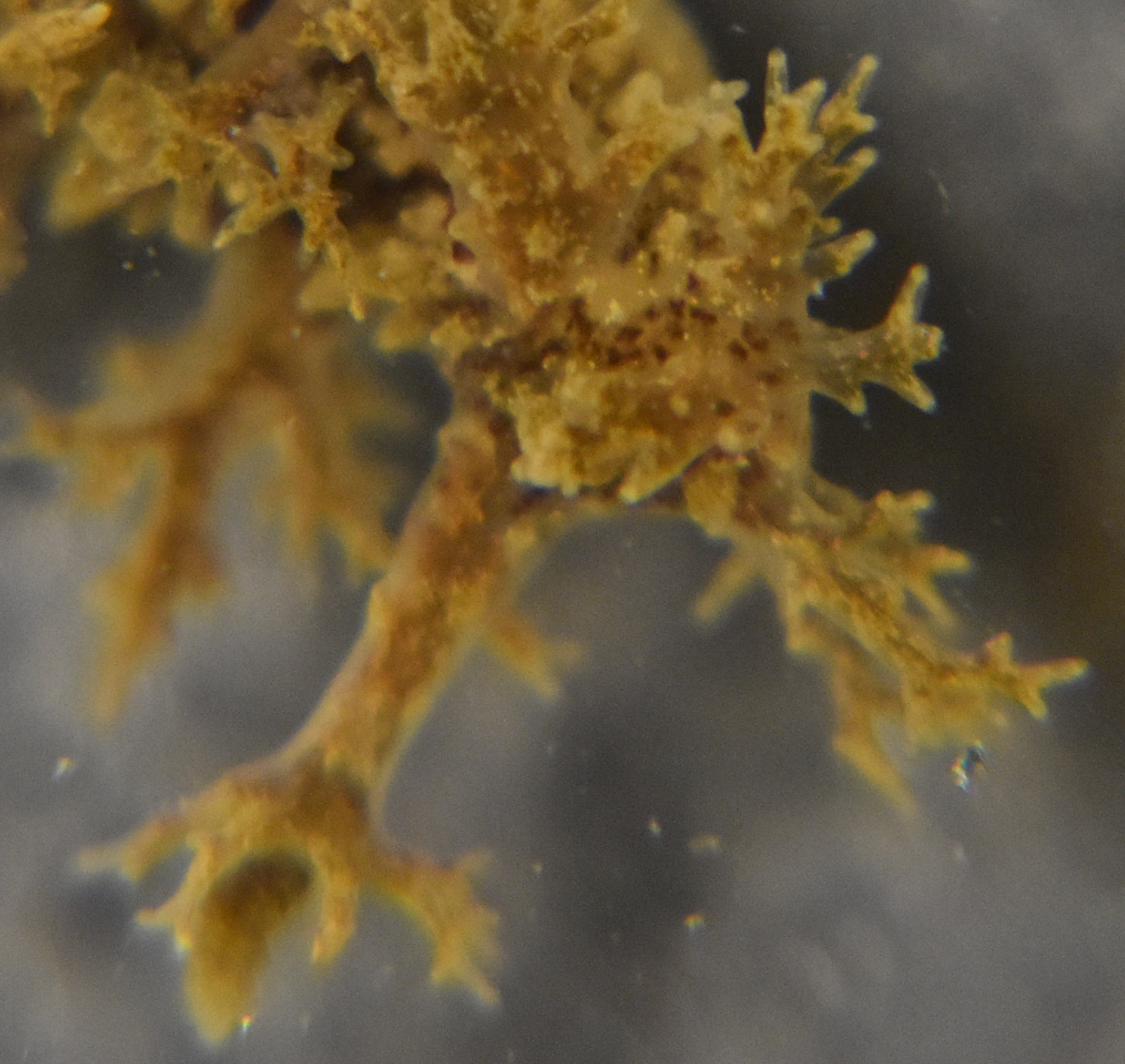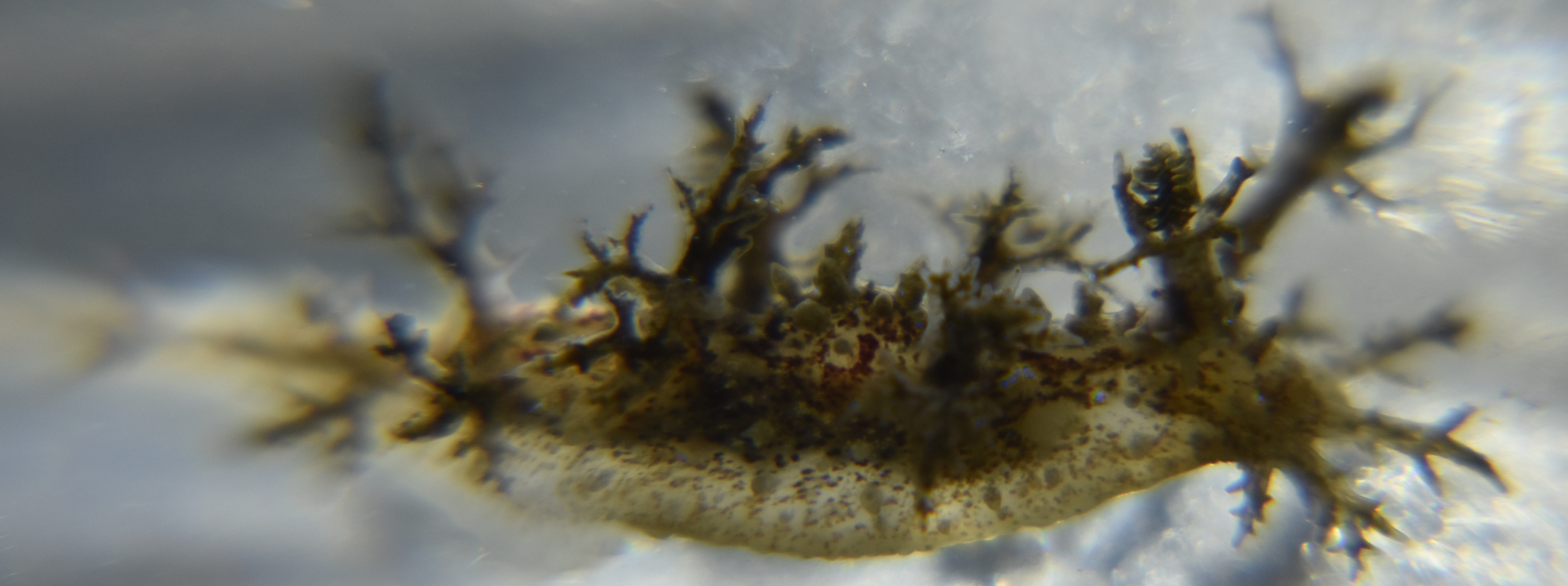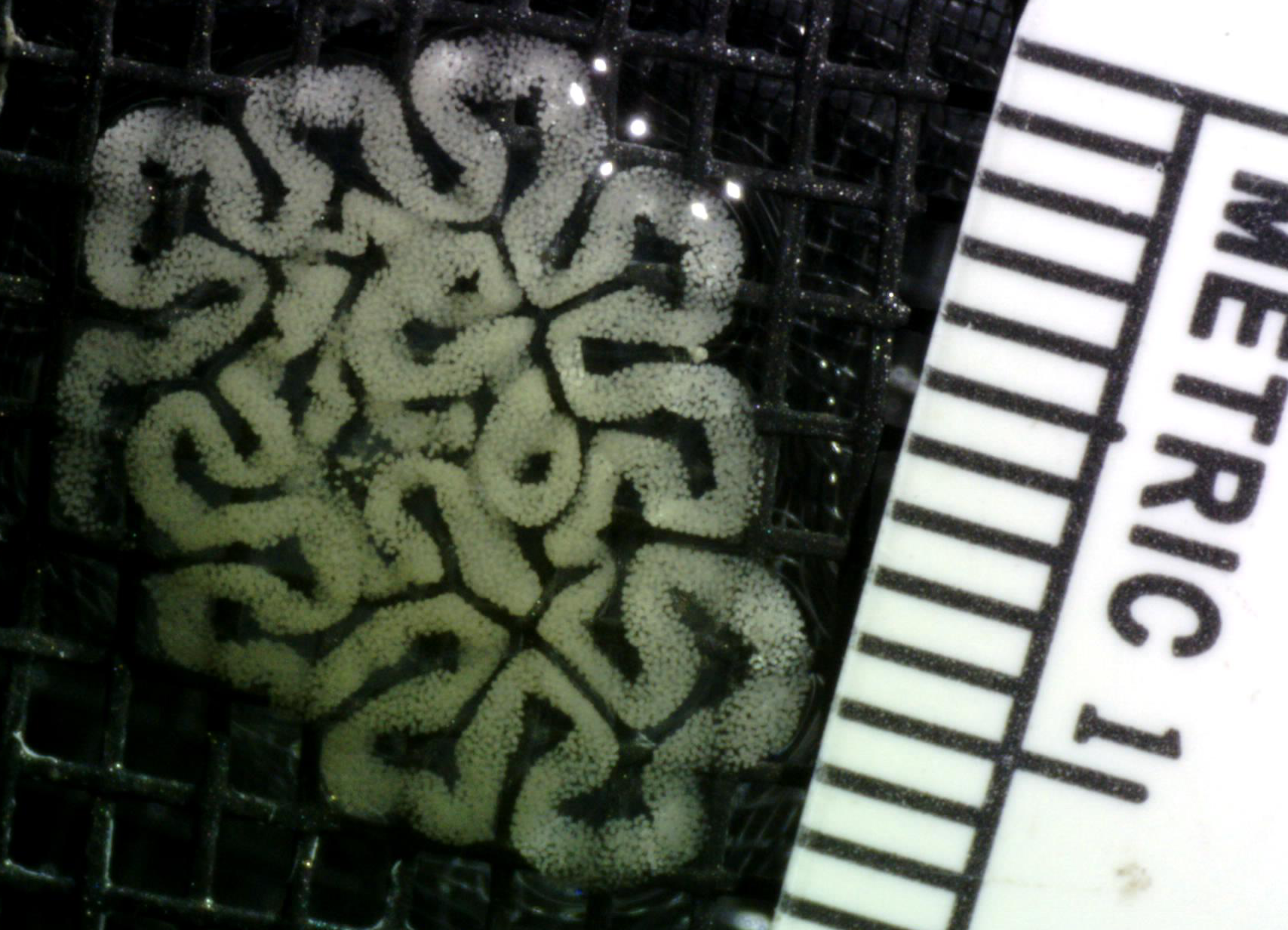Dendronotus albopunctatus Robilliard, 1972Common name(s): White-spotted dendronotid, Golden-spotted dendronotid |
|
| Synonyms: |  |
|
Class Gastropoda
Family Dendronotidae
|
|
| Dendronotus albopunctatus, about 2.5 cm long, found in October 2024 on brown kelp in Sharpe Cove near Rosario Beach Marine Laboratory. This individual is sexually mature and shed eggs shortly after these photos (photo). The head with extended rhinophores and oral veil papillae is to the right. | |
| (Photo by: Dave Cowles, October 2024) | |
Description: Dendronotids have the anus on an inconspicuous papilla in the anterior half of the right side of the dorsum, usually among the cerata. They have fanlike branched cerata on the dorsum, which are usually numerous and in transverse rows. The clavus of the rhinophores is not retractile into a sheath. Dendronotus albopunctatus has a slug-shaped body with low tubercles on the dorsum (photo) and 4 pairs of large,bushy cerata in two longitudinal dorsolateral rows. The body has no distinct dorsolateral margin. The anterior end over the mouth forms a large, wide oral veil with three pairs of long, branched branched papillae extending forward over its anterior end. These papillae look similar to the cerata on the animal's dorsum. The rhinophores are large, with a perfoliate clavus and a crown-like series of papillae at the tip (photo). The foot, which is sometimes flattened and widened when the animal crawls, may have a white line around the edge. The species is generally colored pale brown or tan with darker reddish-brown patches and tiny golden-yellowish or white spots scattered across the body, rhinophores, cerata, and the oral veil papillae (photo). Length to 3 (or 6) cm.
Note: Although this species keys to D. albopunctatus in Kozloff's key, there is variation of the species' color pattern in this and other references. There may be diversity in color pattern or there may be several closely-related species.
How to Distinguish from Similar Keyed Species: The Dendronotids that also have a non-flattened, sluglike shape and bushy cerata such as D. albus, D. dalli, D. diversicolor, D. frondosus, and D. irisdo not have as pronounced an oral veil but usually have more than 3 pairs of papillae on the oral veil. These papillae may not be branched. They also do not have the golden or white spots scattered over the body.
Geographical Range: Northern British Columbia to Oregon
Depth Range:
Habitat: Has been found on soft sandy bottoms and on kelp.
Biology/Natural
History: Feeds
on sponges and on the hydroid Thuriaria
argentea. It exhibits an escape response to the predatory
seastar Pycnopodia
helianthoides.
| Return to: | |||
| Main Page | Alphabetic Index | Systematic Index | Glossary |
References:
Dichotomous Keys:Carlton, 2007
Kozloff, 1987, 1996
General References:
Behrens,
1991
Behrens
and Hermosillo, 2005
Lamb
and Hanby, 2005
Scientific Articles:
Robilliard,
Gordon A., 1972. A new species of Dendronotus
from the northeastern Pacific with notes on Dendronotus
nanus and Dendronotus
robustus
(Mollusca: Opisthobranchia). Canadian Journal of Zoology 50: pp.
421-432
Web sites:
General Notes and Observations: Locations, abundances, unusual behaviors:
In this view of the animal crawling on a petri dish, the large, perfoliaterhinophores and the branched oral veil papillae are clearly visible on the left, anterior end. Photo by Dave Cowles, October 2024
In this view the dorsal tubercles, widened foot, and brown splotches on the body are visible. Photo by Dave Cowles, October 2024

In this view of the anterior end, some of the tiny white or golden
speckles scattered over the body are visible. Photo by Dave Cowles,
October
2024

This view of the posterior 2/3 of the rapidly-crawling animal shows
more scattered gold or white speckles,especially evident on the
posterior
foot. Photo by Dave Cowles, October 2024
This view shows the eggs laid on a nylon mesh. The smallest scale graduations to the right are millimeters. Photo by Dave Cowles, October 2024
Authors and Editors
of Page:
Dave Cowles (2024): Created original page
CSS coding for page developed by Jonathan Cowles
Salish Sea Invertebrates web site provided courtesy of Walla
Walla University


